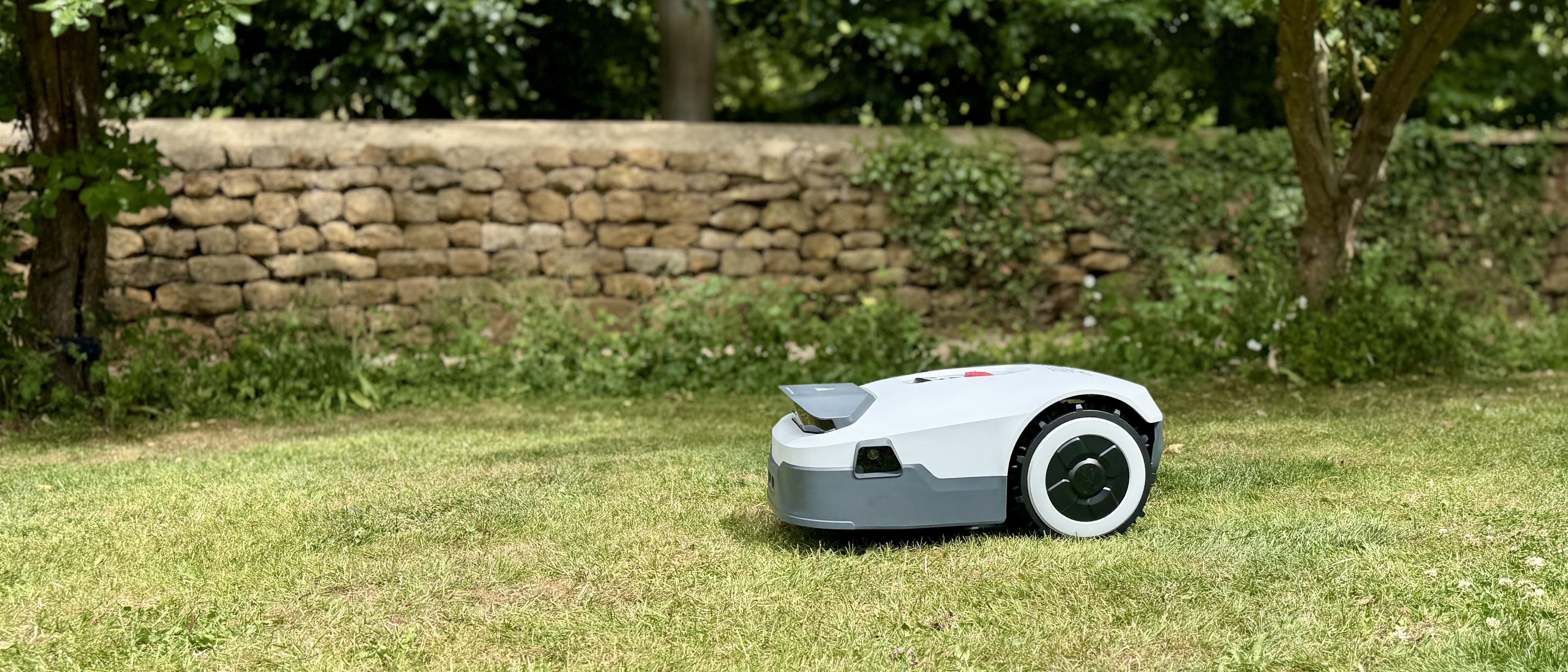TechRadar Verdict
The Anthbot Genie robot lawn mower delivers smart, hands-free lawn care with little fuss. Like all the best lawnbots mowers, it mows in straight, parallel lines that leave it looking like you'd hired a pro, and its intelligent mapping system is fast and effortless. The app could do with a tweak, and it's a shame the wall-mounting kit for the RTK station is a paid extra, but it's still an exceedingly reliable choice that just works.
Pros
- +
Cuts like a pro
- +
Easy to use
- +
Impressive mapping and navigation
- +
Great obstacle avoidance
Cons
- -
The app could do with a tweak or two
- -
RTK wall mount sold separately
- -
Not the widest cutting width
Why you can trust TechRadar
Anthbot Genie: two-minute review
Like the very best in the latest tranche of self-guided robot lawn mowers, the Anthbot Genie requires no perimeter wires and no professionals to install it. Simply take it out of its box, set up its charging station and RTK receiver in a suitable spot and set it off on its way.
There are three versions to choose from, with different battery capacities making them suited to different lawn size. The Genie 600 is designed for lawns up to 0.22 acres / 900m², the Genie 1000 is for up to 0.49 acres / 2000m² and the Genie 3000 is for up to 0.89 acres / 3600m². For this review, I tested the 3000.
Although the Genie's 7.9 inch / 20cm cutting width isn't the widest on the market – that accolade goes to the five-star Mammotion LUBA 2 – what it lacks in size it makes up for in accuracy. Thanks to RTK-GPS and its AI-empowered 3D four-camera recognition technology, the Genie cuts in straight lines and navigates neatly around edges without the typical zig-zag chaos of older robot mowers. It's a sterling obstacle avoider, too.
However, its success may depend on the RTK receiver having a good line of sight to a range of satellites in the sky, and to that end it's a bit of a shame that a wall-mounting kit (to place the receiver above the tree-line) is an added extra rather than being included as standard. That said, positioning mine in the lawn next to the charge station – the only setup possible with the included equipment – worked just fine to me, even with a fair amount of tree coverage.
Like the vast majority of robot mowers, the Genie doesn't have a grass collector. Instead, its five-blade cutting disk snips off millimeters at a time, leaving the nitrogen-rich cuttings to fertilize the lawn. Its motorized cutting deck is easily adjustable in the app and lets you fine-tune your grass from a crisp trim to a lush, longer look.
If you're in the market for an easy-to-use robot that's reliable and easy to operate, you've found it. Read on for my full Anthbot Genie robot lawn mower review.
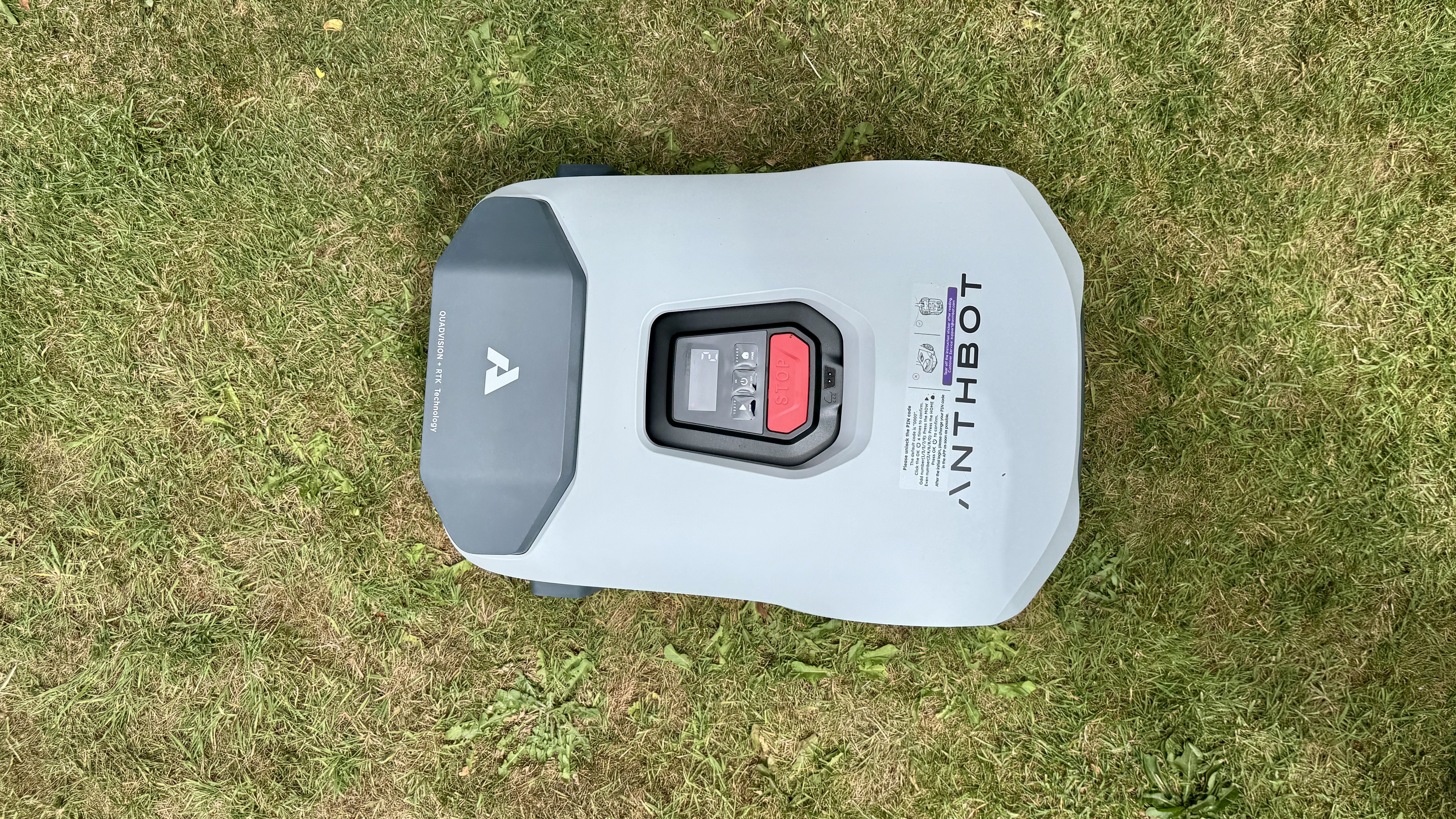
Anthbot Genie review: price & availability
- List price: $999 to $1,359 / £999 to £1,699
- Launch date: Spring 2025
- Available: US and UK
The Anthbot Genie went on sale in Spring 2025, following a successful Kickstarter crowdfunding campaign. They're available to buy direct from Anthbot and Amazon in the US and the UK, and at list price they cost $999 / £999 for the Genie 600, $1,199 / £1,299 for the Genie 1000 and $1,599 / £1,699 for the Genie 3000.
Sign up for breaking news, reviews, opinion, top tech deals, and more.
Given that wire-free yard robotics is a relatively new thing, right now you can expect to pay big money for the privilege of never having to mow the lawn again. However, prices have already started to tumble and this will likely continue as more competition enters the market. In fact, at time of writing, all sizes of the Genie were heavily discounted in both the US and the UK. In the pantheon of robot lawn mowers, the Anthbot Genie's price structure can be considered quite reasonable given the huge amount of sci-fi tech involved.
- Value for money score: 4 out of 5
Anthbot Genie specs
Max lawn size: | 0.22 acres / 900m², 0.49 acres / 2,000m², 0.89 acres / 3,600m² |
Cutting deck width: | 7.9 in / 20cm |
Cutting height adjustment: | 1.18 - 2.8 in/ 30-70mm, motorized |
Bot dimensions: | 24.8 x 16.1 x 10.6in / 63 x 41 x 27cm |
Navigation: | RTK GPS + 4-camera 3D Vision |
Climbing ability: | 45% (24°) |
Drivetrain: | Rear wheel drive |
Waterproof: | IPX6 |
Rain sensor: | Yes |
Noise: | 58dB |
Connectivity: | Wi-Fi (2.4G), 4G, Bluetooth |
Obstacle avoidance: | 3D Vision (4 Cameras) + All-round Physical Obstacle Avoidance |
Maximum zones: | 20 - 30 |
Anthbot Genie review: design
- 3 variants with different batteries for different lawn sizes
- Navigates using RTK GPS and AI powered cameras
- Wall mounting kit for RTK station is sold separately
Funny how the world of technology works. It takes just one company to create a new type of innovative product and within a year everyone's at it. Just look at robot vacuum cleaners. Once there was iRobot, then the likes of Roborock followed suit and, before we knew it, we were being bombarded with hundreds of robot vacs from companies we'd never heard of. Well the same thing is happening in the world of robot lawn mowers.
Although robot mowers have been out since the 1990s, I've never had the desire to review one because they've all required getting down on hands and knees and fixing, or burying, a ridiculously long boundary cable around the entire perimeter of the lawn and every outdoor ornament and piece of furniture. But that's all changed with the recent advent of RTK GPS-, camera-, and LiDAR-guided lawnbots that not only navigate a lawn – and any obstacles – with gobsmacking precision but cut grass in beautifully straight lines that make any lawn look immaculately snazzy.
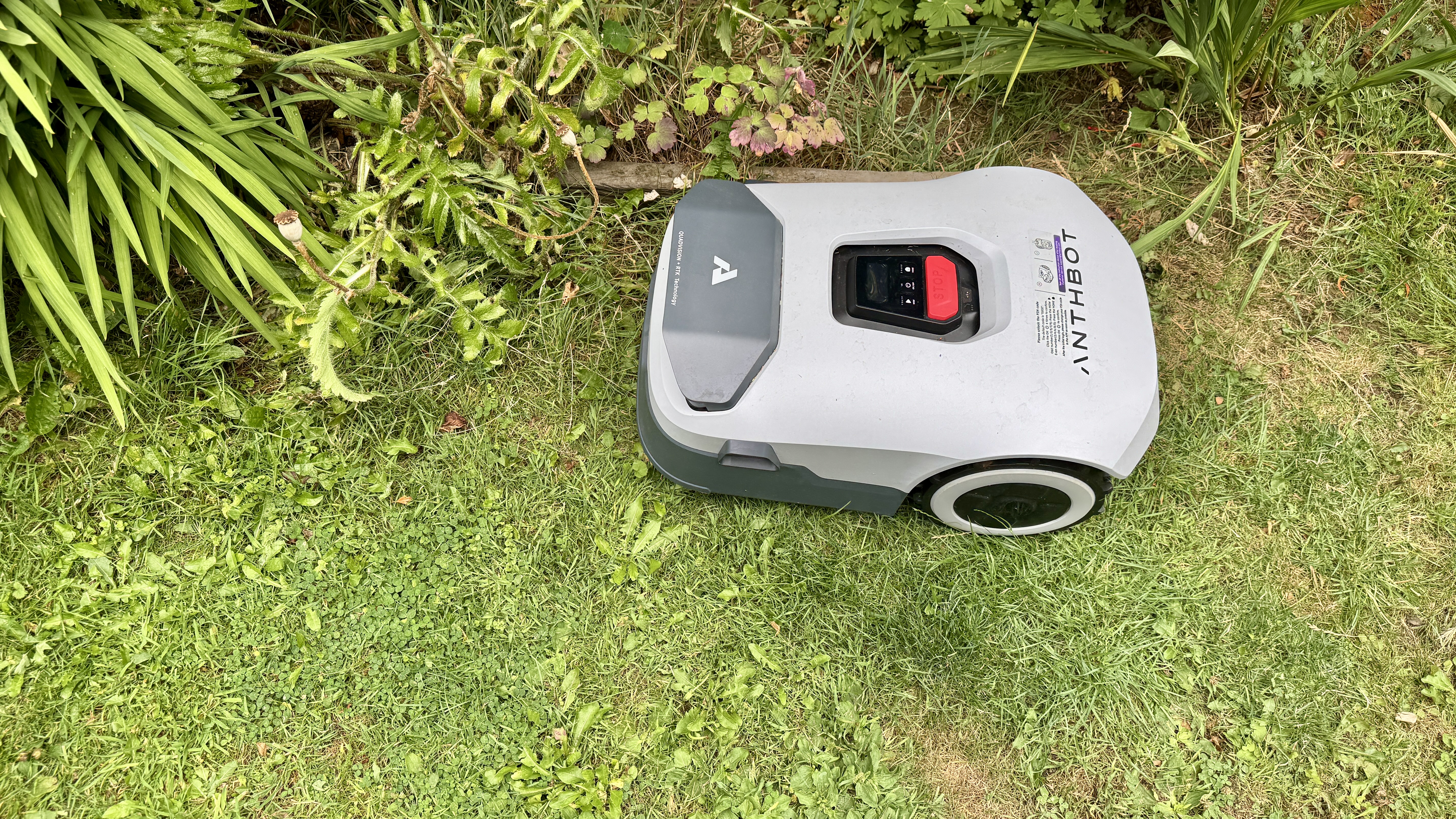
Anthbot is one of those young upstarts and I've got to say that its design team has done its homework and designed one of the very best lawnbots I've so far tested – and a great looker to boot. In fact, it's getting rather difficult to write these reviews because every robotic lawn mower I receive to test seems to be a bit better than the last, and there are only so many stars one can give as commendation.
The Anthbot Genie is the latest addition to the fast-evolving world of smart robotic lawn mowers, and it brings some serious tech to the yard. This model is available in three battery capacities, which equate to the amount of lawn space they can realistically handle without having to return to recharge too often.
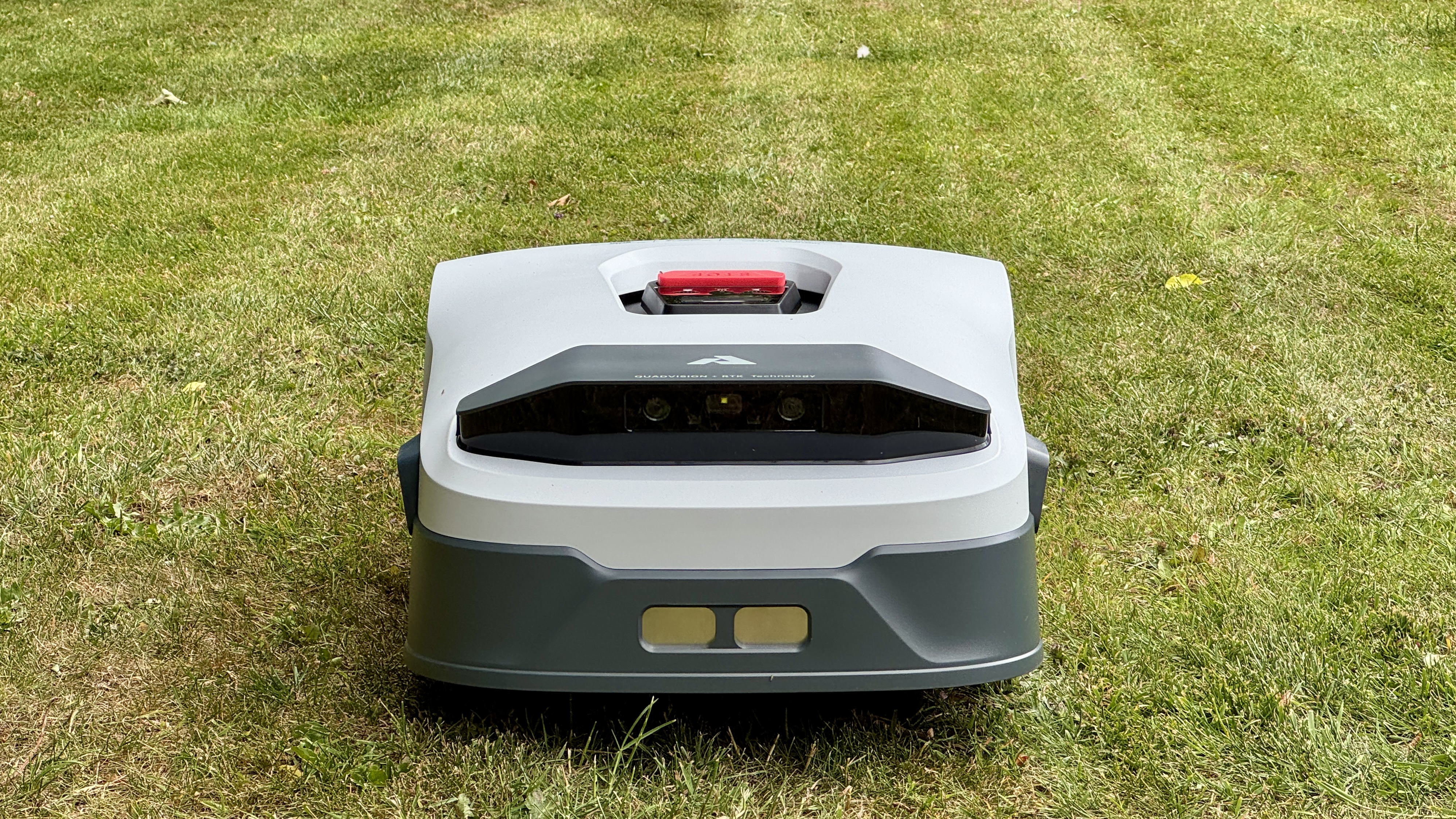
If you have a small urban-sized lawn, opt for the Genie 600 which has a reach of 0.22 acres / 900m² . If your lawn's a lot larger or you want the robot to cut an entire space without heading back to base for a recharge (remember, fewer recharge cycles equals a longer battery life) then opt for either the Genie 1000 which is suitable for lawns up to 0.49 acres / 2,000m² or the Genie 3000 which is capable of trimming a whopping 0.89 acres / 3,600m². All three variants are exactly the same size and have the same features, except the 3000 model can cut up to 30 different lawn zones while the other two can manage 20.
Unlike traditional robot mowers that rely on cumbersome boundary wires, the Genie uses advanced RTK-GPS combined with an AI-empowered navigation system comprising four cameras (including one on each side) that are said to provide '300-degree human-like vision and 360-degree collision sensing'. I believe it having seen it in operation.
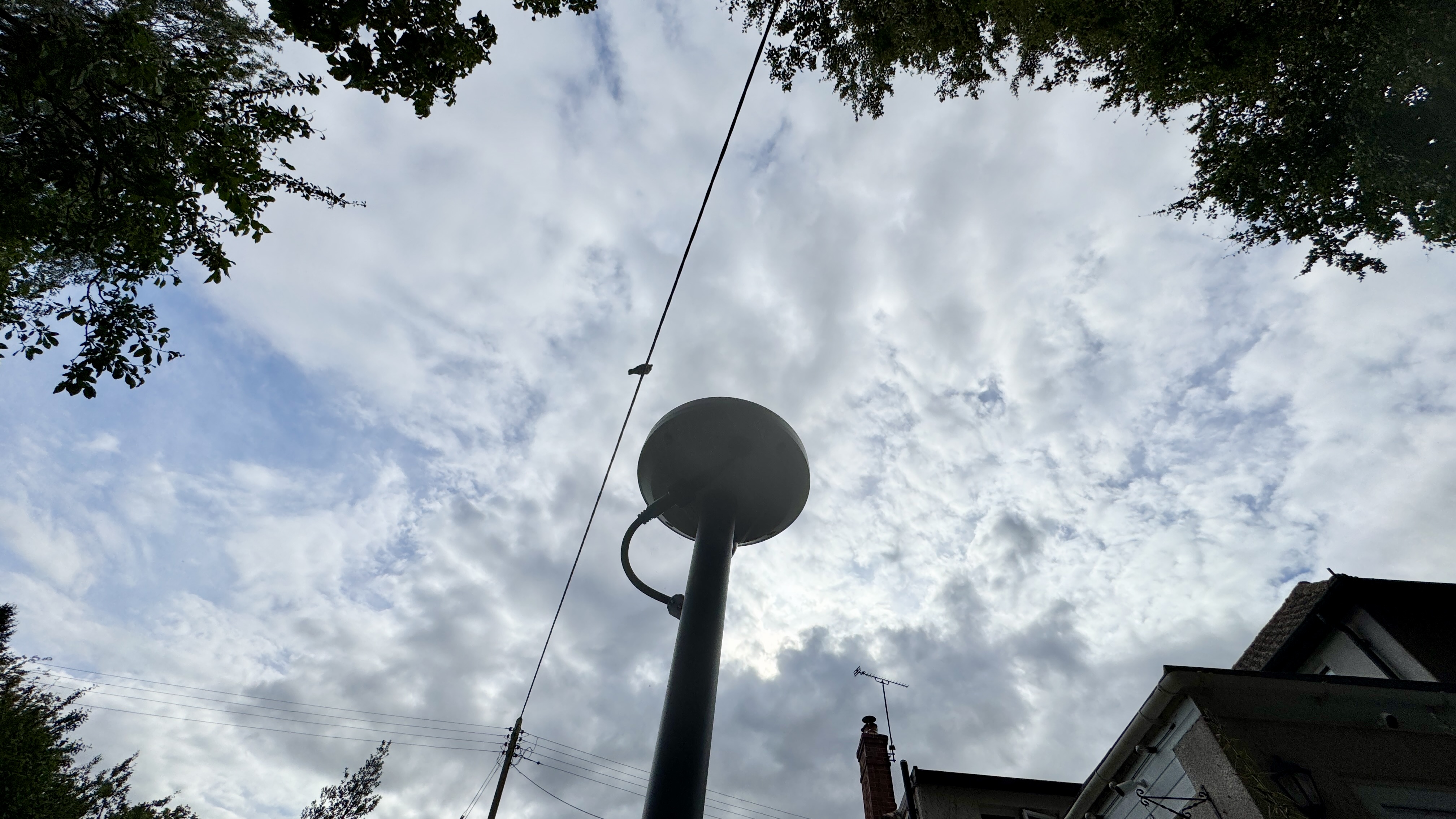
RTK-GPS uses an RTK receiver to correct satellite signals, making them accurate to within a few centimeters. The system requires the bot and the receiver to have direct line of sight to a large proportion of the sky. The idea is that if the GPS signal is weak or lost due to overhead obstructions, the lawn bot will switch over to camera-based navigation.
I should add that RTK-GPS, which is accurate to just a few centimetres, isn't suitable for every home layout because the package requires having an aerial spiked into the lawn within a foot of the charging station and with a clear line of sight to as many satellites as possible. My own lawn is surrounded by very tall trees and the RTK stations of every lawnbot I've so far tested have all been positioned to the side of two 80-foot beech trees.
In theory my yard should be the worst case scenario but, against all odds, I'm receiving signals from between 12 and 25 satellites at any given time – and with just 50 per cent or so of visible sky. So don't write off this model or any other without taking a good look at the sky around your home.
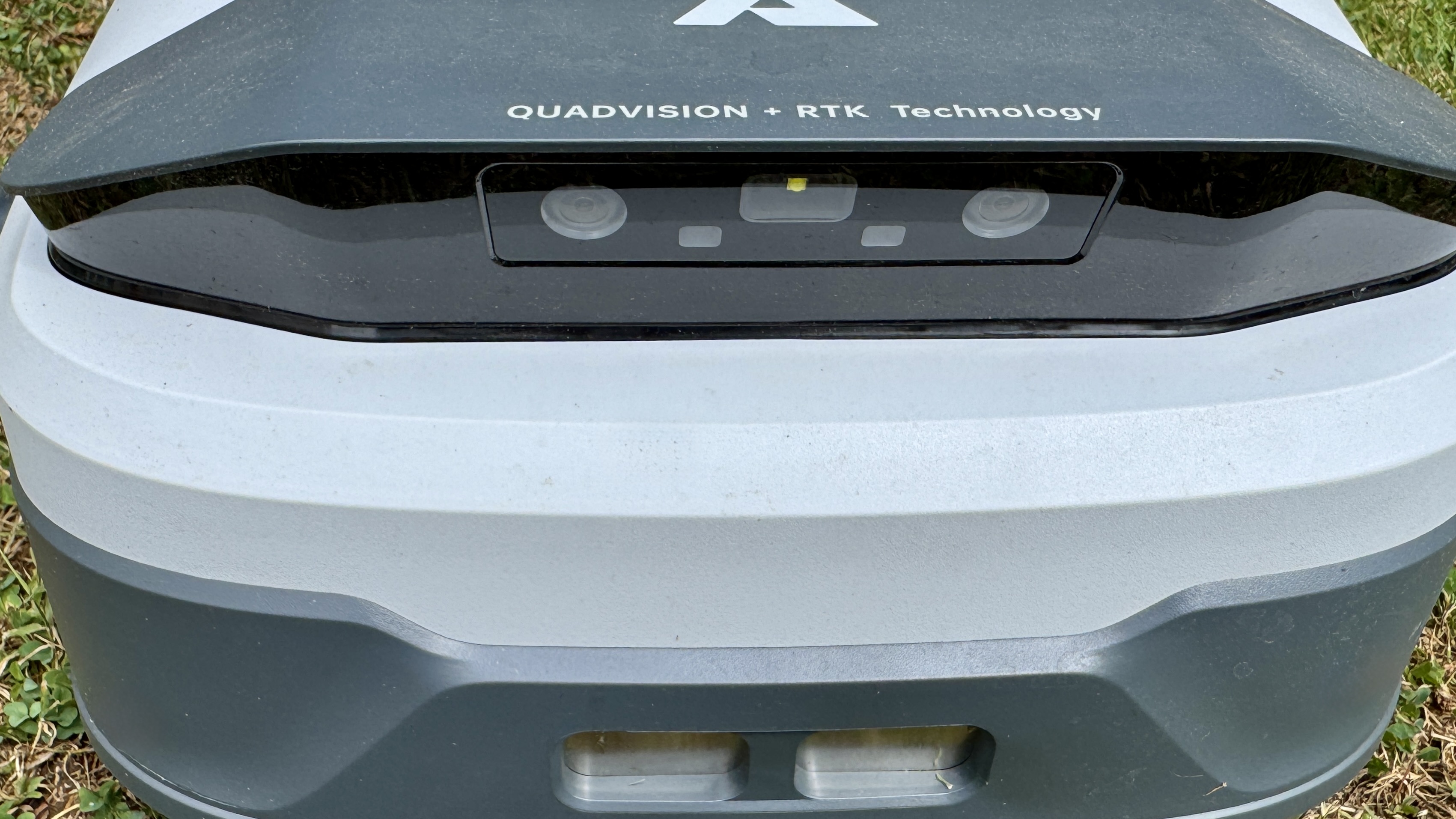
If your land space looks unsuitable, Anthbot sells a wall-mounting kit that enables you to attach the RTK receiver to a structure up high (so there's wider direct line of sight to satellites in the sky), and plug it into a separate power source to the charge station. Some other lawnbots, include wall-mounting kit with the initial bundle, but here it's an additional purchase.
When it comes to obstacle avoidance, this model features three levels of sensitivity (low, medium and high) and it's worth playing around with the settings to find the best solution for your lawn. I've been very impressed with the Genie's obstacle avoidance and you can read more about it in the Performance chapter below.

Right, let's get down to the stats. The Genie's 7.9 inch / 20cm cutting width may sound modest, but it's more than capable of maintaining a consistently neat finish on the lawn sizes it was designed for. Like all robot mowers, the Genie uses a spinning horizontal disc with razor blades attached to the outer edge. Some models like the Eufy E15 have just three blades, but this one has five.
The Genie's motorized cutting height is fully adjustable between 1.2-2.8 inches in 0.2in increments (30-70mm in 5mm increments), allowing you to switch between a close-cropped summer lawn or a longer, lusher look in the cooler months. However, you won't see the 0.2in / 5mm increments on the app unless you tap on the dividing lines between each main measurement. Please fix this Anthbot.
Like 99 per cent of robot mowers, the Genie is a mulching model, so it finely chops grass into tiny nitrogen-rich clippings that naturally fertilize your lawn. That means no messy grass collectors and no piles of cuttings to dispose of. If the mower is set to perform two to three cuts a week, it will simply snip off a few days' worth growth and therefore not litter the lawn in cuttings.
All robot mowers are whisper-quiet when working; so quiet that you can hardly hear them from just a few meters away. This model's drive motor is a fraction louder than other lawnbots I've tested (around 58dB), but it's hardly audible when you're more than 8 meters away.
I sadly wasn't able to test the Genie's multi-zone function since I only have one lawn, but from what I've seen online, it behaves in the same way as other robot mowers and involves steering the robot like an RC car using the Bluetooth connection from one zone to another. As long as the path between the two zones is free of clutter – and especially gates and steps – the Genie will follow the same path every time it's out on a cutting spree. Impressively, this mower provides the option to create between 20 and 30 zones depending on the variant you've chosen.
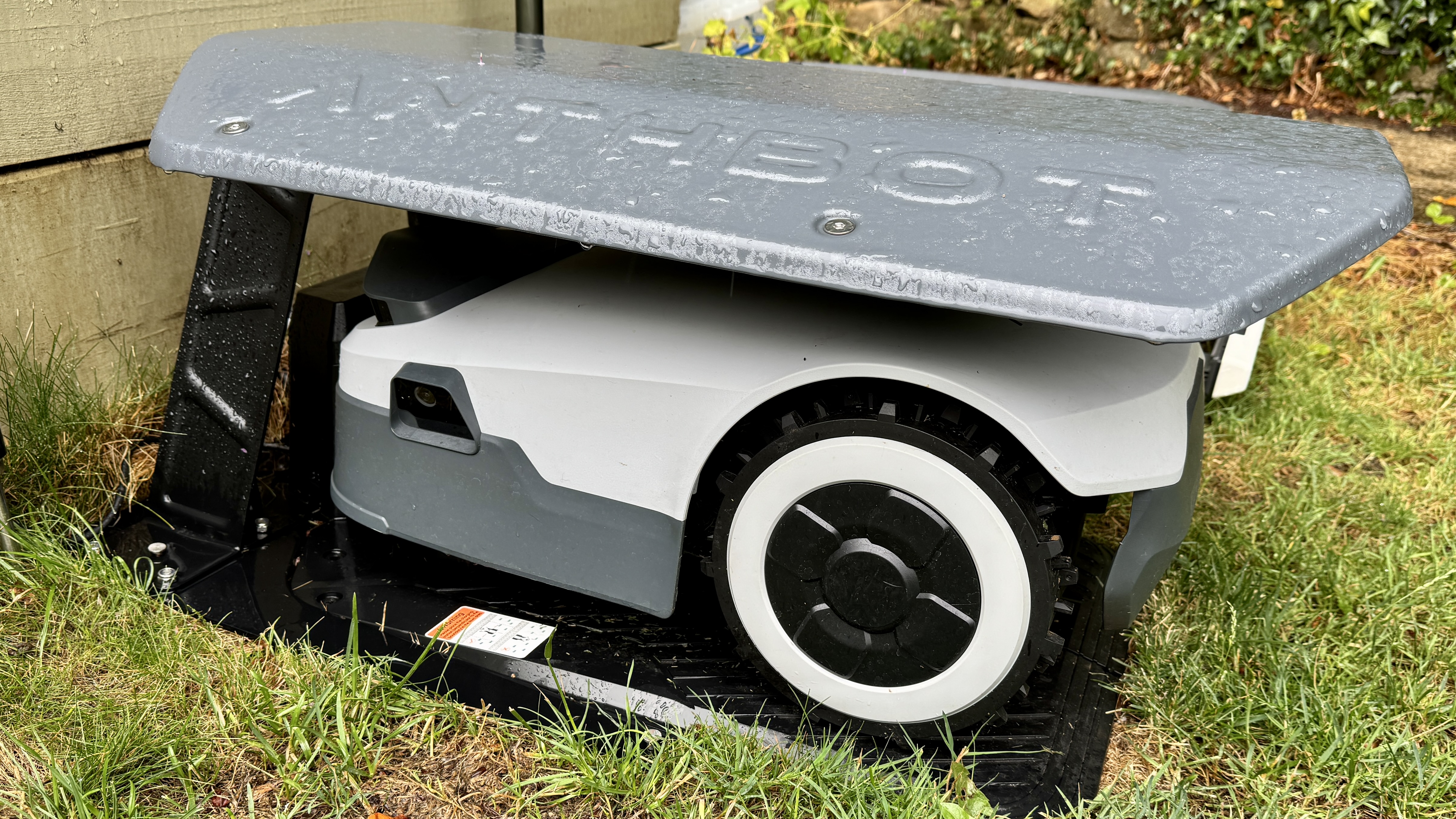
If there are permanent obstacles within the lawn (beds, for example), you can create no-go zones so the mower doesn't try to cut them. As a step up from some competitor models, you can create these in-app with a few taps, just as you would with a robot vacuum cleaner. I should add that the Genie's navigation system will cover the vast majority of obstacle avoidance but it's good to have the no-go option for those who wish to make doubly sure that the robot will always avoid pitfalls like drop offs and ponds.
Like all robot mowers and vacs, the Genie can be easily programmed to run a regular schedule so the grass is always kept in tip-top condition. However, the Anthbot Genie app also features a Smart Lawn Care function, which automatically selects the best mowing strategy based on growth of the grass. I wasn't able to try out this function properly because my test period coincided with an ongoing drought that has prevented most UK grass from growing.
I did select the option but found it very confusing because it leapt straight into a schedule and the whole point of the function is that it chooses when to mow. If it's like Worx's Landroid Vision system, it should require input of grass type and then check local weather to create an automatic schedule.
Perhaps this feature will be improved going forward but for now I would suggest ignoring it and stick to your own schedules. Incidentally, like every other bot on the market, a rain sensor on top of the body automatically pauses mowing during wet weather and you can change the delayed mowing time from between one hour and eight hours.
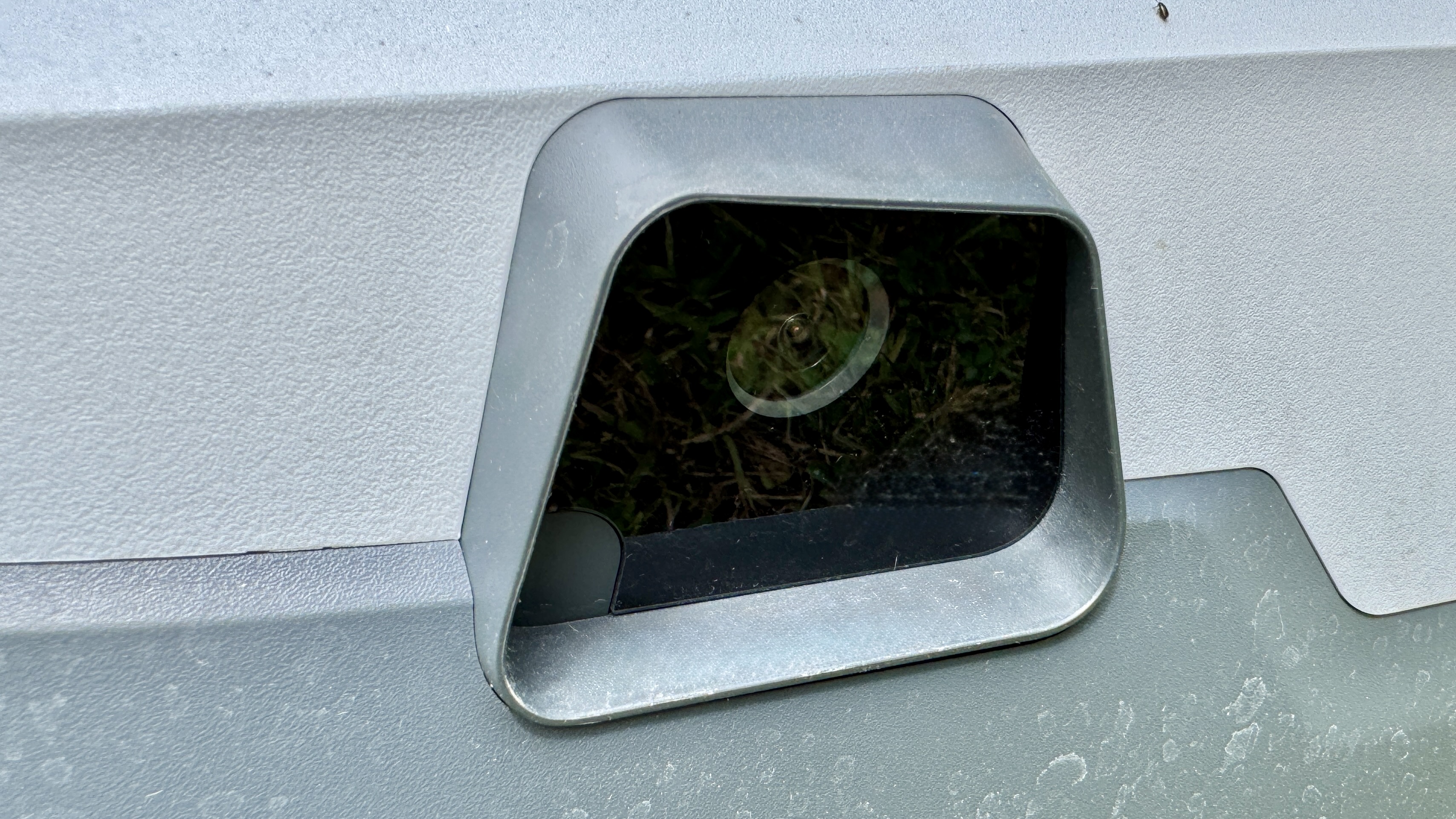
Most mowers are capable of climbing inclines of 30% to 40% but this rear-wheel-drive model goes 5% more, meaning it's suitable for a slightly wider variety of landscapes. The two large and chubby front caster wheels help in this regard, but it's the oversized and heavy treaded rear wheels that provide all the traction. Nevertheless, there will be some lawns that are still too steep for this mower to handle. If that's your lawn, consider the all-wheel-drive Mammotion LUBA 2 or LUBA Mini which both boast amazing 80% incline ability.
Like most modern wireless robot mowers, the Genie is initially bound to one's WiFi and Anthbot account so any light-fingered thieves will basically have a brick on their hands. To further enhance security, a four-digit code is also required and if the robot is moved beyond its preset boundary, an alarm sounds on the robot and the user receives an emergency alert. Top marks in this respect.
According to the US and UK websites, Anthbot already has an after sales repair service in place in many territories – including the UK and US – with a 10 day turnaround in most cases. In fact, I've been very impressed by Anthbot's activity on Facebook in seeking feedback from current users regarding any improvements the company can make going forward.
Setup
The Genie arrived in a large box containing the mowing unit, a charging base, ample electrical cabling for an outdoor mains output and the RTK GPS antennae. I selected a space next to my Mammotion LUBA 2 and placed the antennae beside the charging station. This area is right beneath two 80-foot beech behemoths, a large horse chestnut and a small damson tree but, against all odds, every RTK system I've used has worked.
This one worked too, though it took a few minutes for the RTK receiver to log on to the prerequisite number of satellites. I'm actually amazed that these RTK-based lawnbots work at all on my lawn given the amount of trees surrounding it, and that just goes to show that there are a lot more satellites up there than you might think.
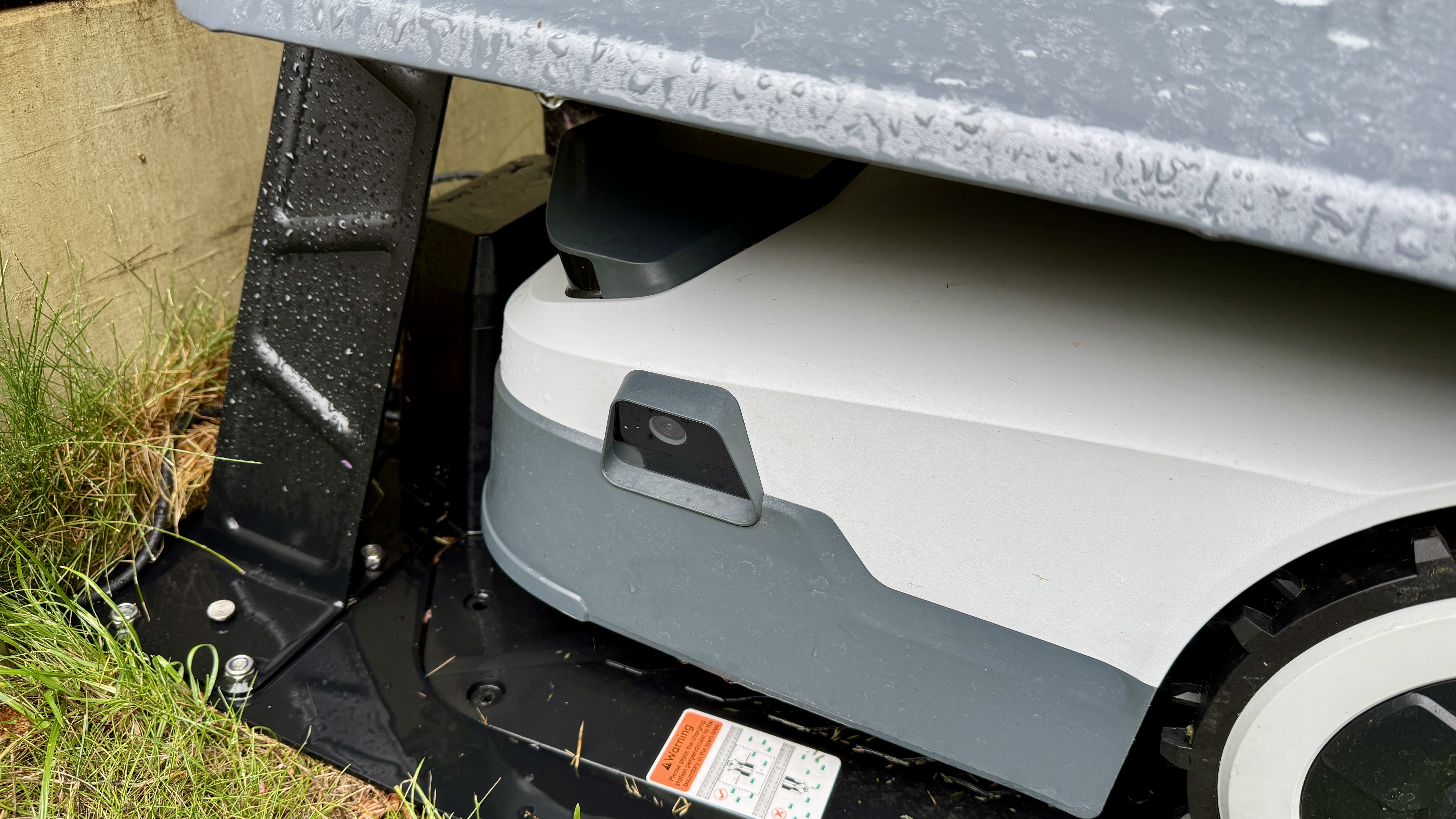
After turning it on and hearing the musical fanfare, you'll be asked to select the default pin code (0000). Even though the machine is also bonded to the owner's Wi-Fi and email address, this code is an extra line of defence against theft of the machine and should be changed to a personal code using the keypad on the unit or, better still, via the app. Just make sure to make a note of your own pin code because the product is a brick without it, and the only way to fix it is by contacting the manufacturer with proof of purchase.
All robots need to map the space they'll be working in; in this model's case, the Genie uses its RTK GPS and multi-camera system. Anthbot provides two methods for mapping a lawn: auto or manual. In auto the robot analyses the lawn's borders automatically, while manual involves driving the bot around the perimeter like an RC car.
I initially chose auto and the Genie mapped the lawn quickly without any messing about. It simply went to the nearest edge and mapped the entire lawn in about five minutes. That's a record! However, I've since discovered an excellent feature in the app that lets you manually expand the map by driving the robot even closer to the perimeter. Nice one Anthbot.
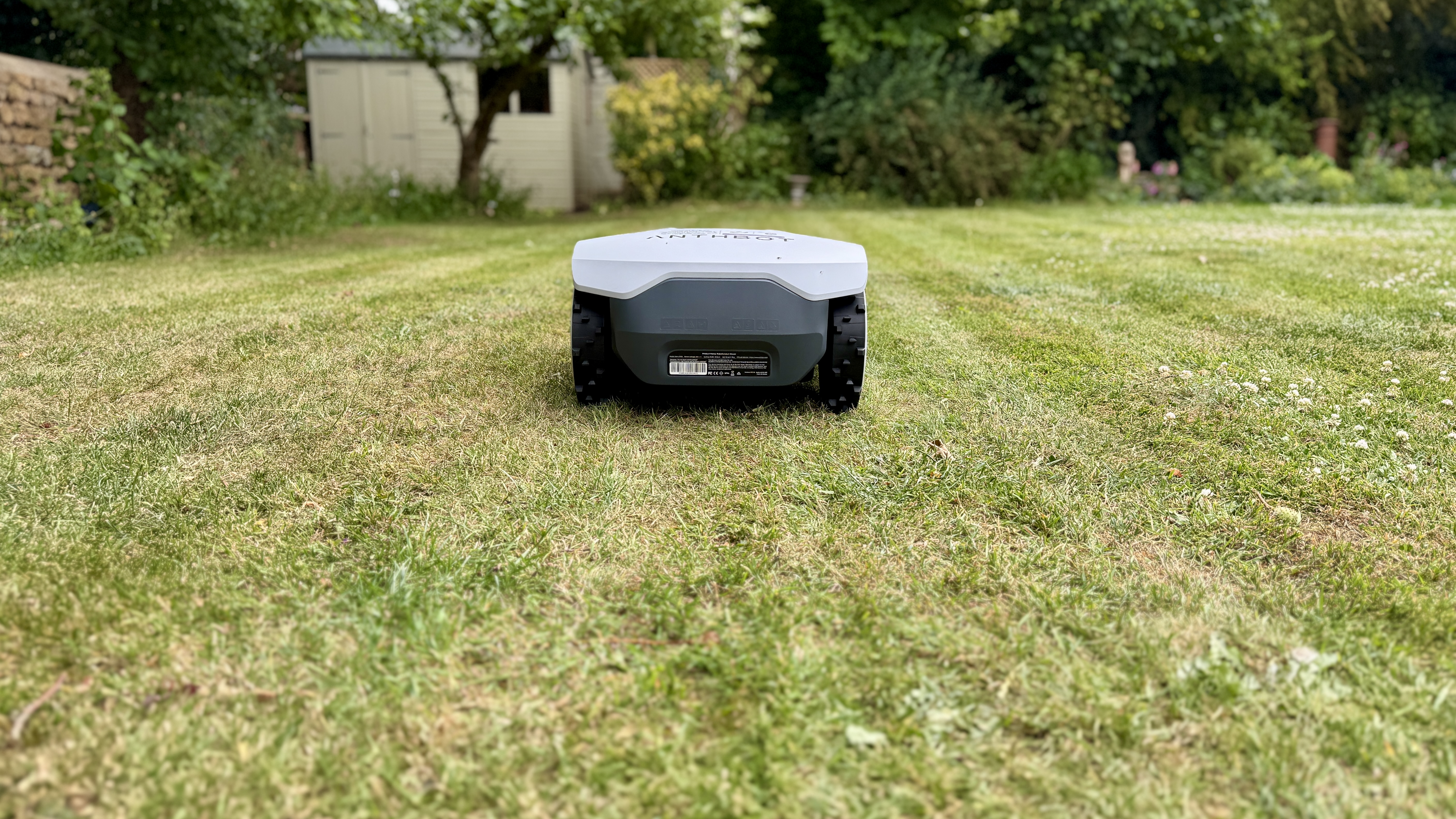
At this juncture I wish to give a shout out to the tailored Rain Cover for the Genie because it not only keeps the robot dry (even though its IPX6 waterproof) but, perhaps more importantly, it blocks out hot summer sun which could feasibly mess around with the bot's battery and electronics. The Anthbot garage is an impressive piece of kit in its own right since the main body is cast from solid steel and is so robust that I sense it would stand up to a tornado, let alone a gale.
Once the Anthbot Genie is all set up and ready to roll, it's simply a case of going into the app and setting a two- or three-day schedule, your preferred cutting height and obstacle sensitivity, and whether you want the robot to mow in vertical or horizontal stripes. And that's it. You can now retreat, safe in the knowledge that your lawn will always look neat and tidy, even when you're away on holiday.
- Design score: 4.5 out of 5
Anthbot Genie review: performance
- Impressive cutting performance
- Superb navigation system
- On-par obstacle avoidance
Every perimeter wire-free robot mower I've reviewed to date has performed surprisingly well, at least given the relative newness of this particular field of robotics. The Genie's 7.9 inch / 20cm cutting width may seem compact compared to the 15.7 inch / 40cm Mammotion LUBA 2, but I've been impressed by the precision of its cut – its five-blade disc spins at around 3,000rpm, slicing through grass stems like a pair of sharp scissors, leaving only the tiniest of mulched clippings in its wake. If programmed to perform regular cutting sessions during the main season, the nitrogen-rich clippings will soon disappear back into the lawn where they'll act as natural fertilizer.
Whether you set it to 1.2in / 30mm for a UK-style summer trim or 2.8in / 70mm for a longer cut that's more suited to US grass varieties, the Genie should maintain a consistent finish across varied lawn surfaces. The Genie's simple, replaceable blade system certainly handled my lawn's thick early summer growth with ease, leaving no clumps or uneven patches. However, it sadly hasn't seen much use during the past two weeks because the UK has been experiencing a series of heatwaves and all lawns in the southern region have shut down to some extent.
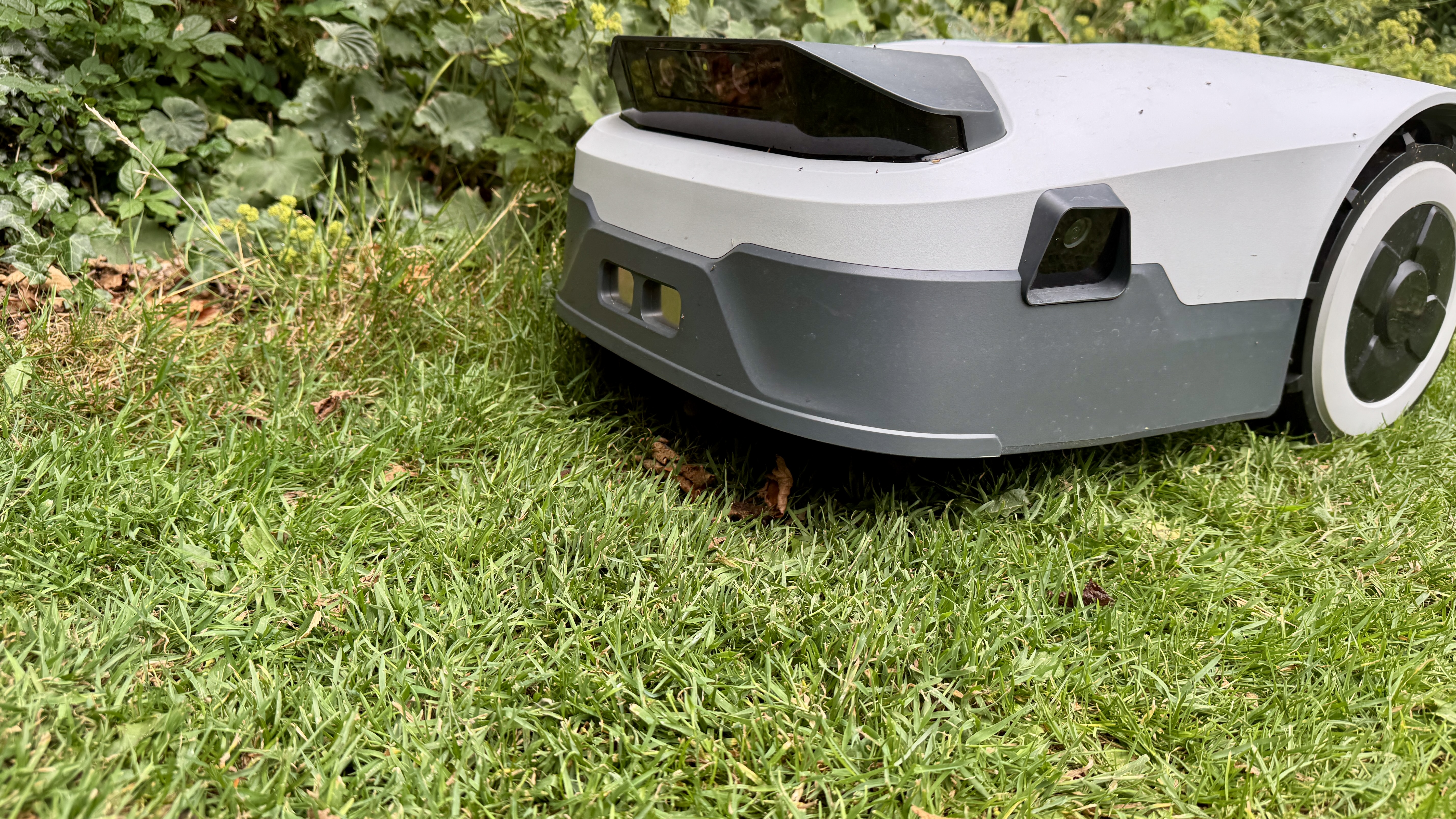
I've been especially impressed by the Genie's navigation system, which has never faulted in four weeks of using it. My base station is set to one side of my 170 square metre lawn with a gap of around 15 meters / 49ft to the side border and when the Genie leaves its station, it starts mowing in a straight vertical line from that point, missing the 1.5 metres of lawn width to its left and continuing to cut the largest section of lawn to its right.
It then moves to the left side of its first path to complete the rest of the lawn before moving to the edges, which it cuts remarkably well. I should add that its border cutting improved tenfold since I engaged the new 'edge-cutting' option and manually expanded the map by driving the robot closer to the border.
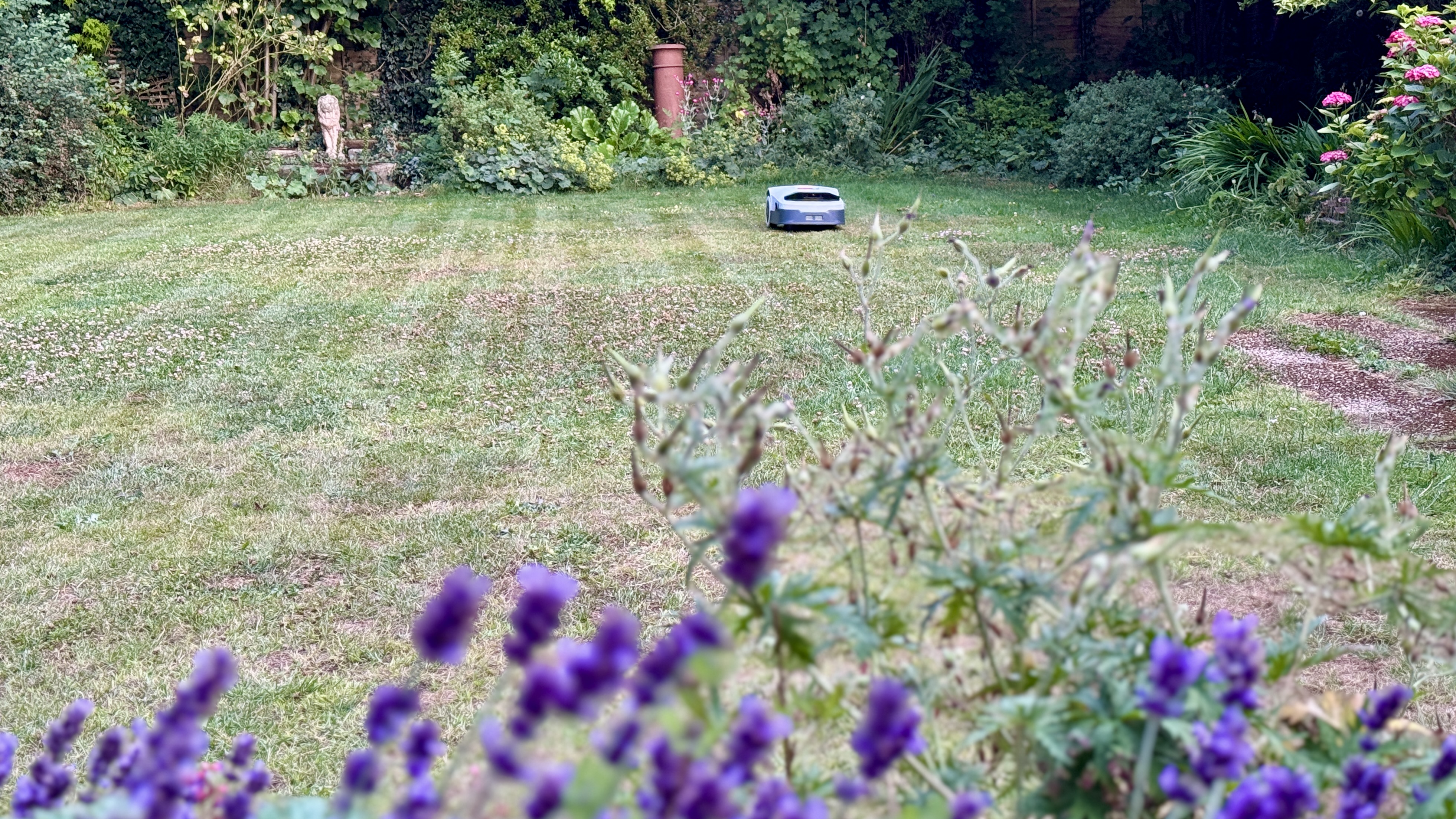
Granted, the Genie employs an unusual cutting pattern when compared to other lawnbots I've tested but, hey, it has always finished the task in about an hour so I have nothing to grumble about in this regard. All I know is that it creates lovely stripes in its wake. Yes, I still prefer the much wider tract of the Mammotion LUBA 2 but I'm getting more and more used to the narrower stripes that the majority of current bots create.
I've also been impressed by the Genie's better-than-average obstacle avoidance. I tested it using a variety of objects – from dog toys and tennis balls to a chewed-up plastic plant pot – and it avoided all of them with deft precision (the two extra side-mounted cameras most definitely helped in this area). In fact I was so impressed I decided to bring out the ping-pong ball that no robot mower has so far avoided. Unfortunately, this was too small an item even for the Genie, which makes me think that manufacturers adjust their respective robots to ignore the smallest of objects on purpose lest they mistake scattered leaves for obstacles and avoid them entirely.
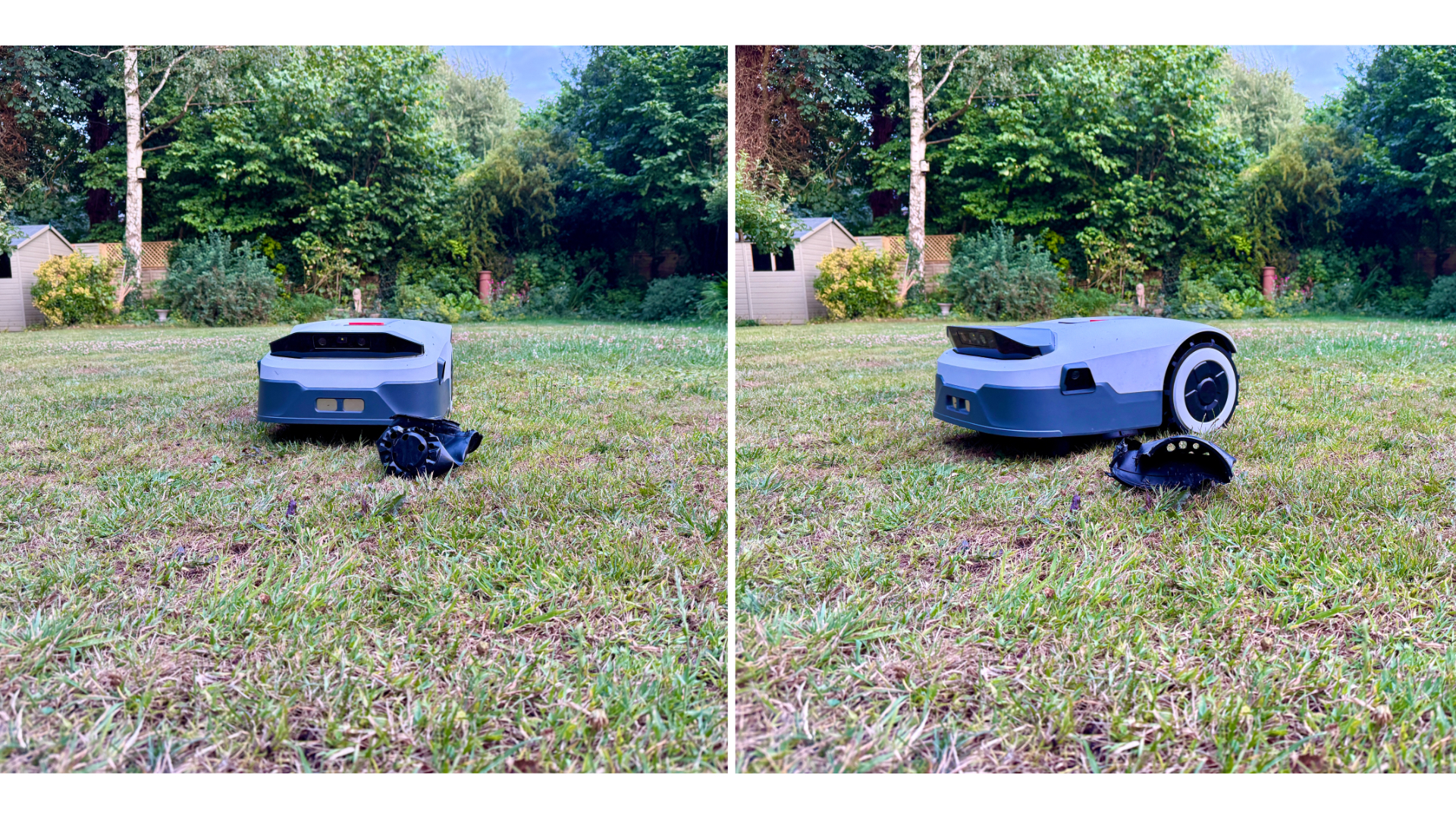
I should add that my test lawn is perfect for any robot since it's rectangular shaped and with no inclines and no major obstacles in the way. Nevertheless, I have watched a few videos by other users with more challenging terrain and they've also been impressed with the Genie's performance.
One thing I have noticed is that the Genie 3000 I was sent to review has been able to cut my entire lawn and the edges with 72 per cent of battery remaining. Yes, this model is overkill for my lawn size but it just goes to show how energy-efficient the model's battery and motors are. If you can afford it, perhaps opt for a larger model than you need so you can cut down on battery charging cycles and have the available juice to cut extra lawn zones in the future.
- Performance score: 5 out of 5
Anthbot Genie review: app
- Easy to use
- Receives quite regular updates
- Some room for improvement
The Anthbot app is mostly excellent. This easy-to-use app allows the user to set cutting heights and angle of cut, create up to 30 mowing zones, programme different schedules for each and define no-go areas with a swipe of the finger. The app also includes real-time monitoring so you can check the mower's location, battery level and progress at any time, even if you're away from home.
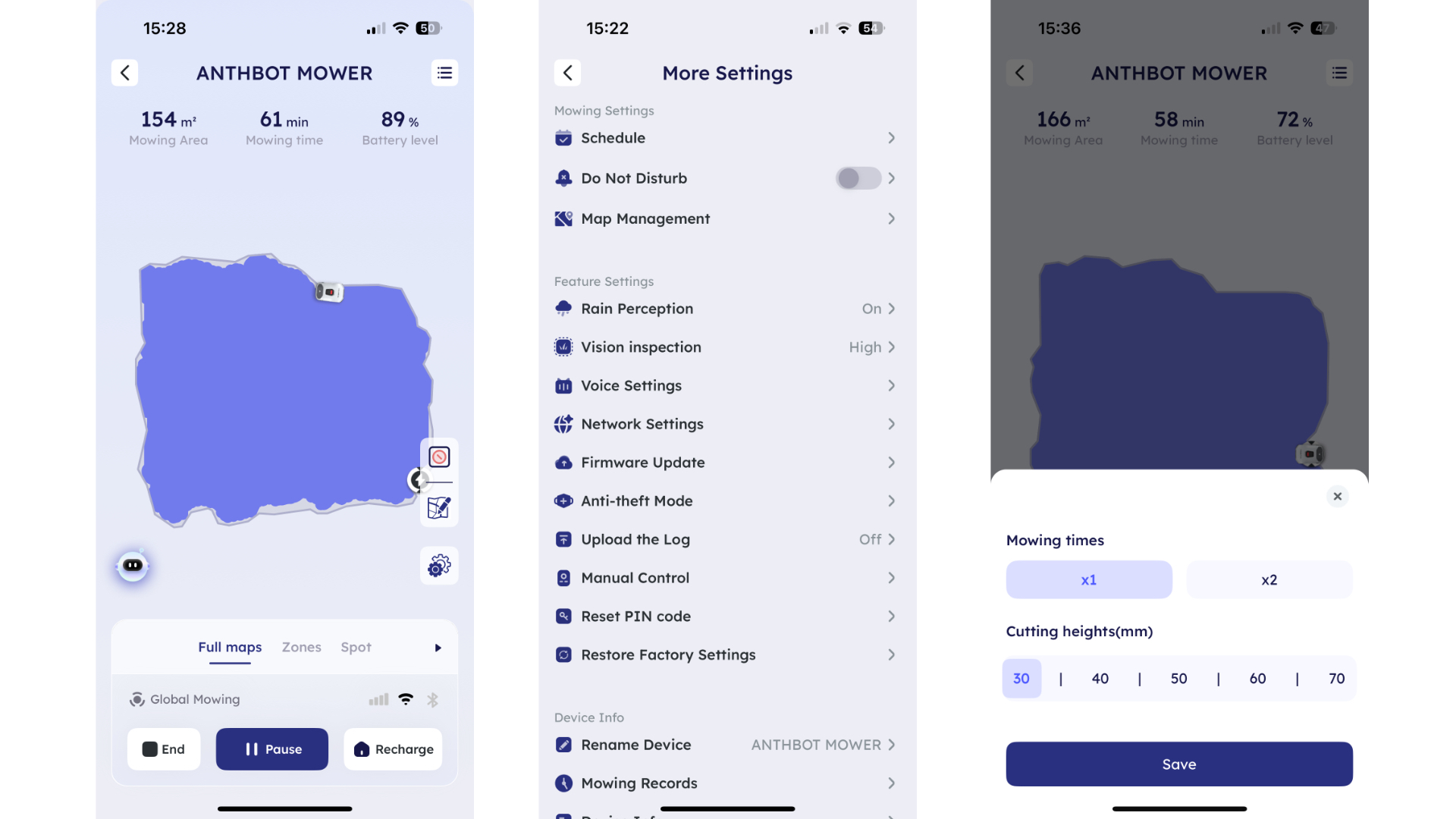
My test model recently received a comprehensive update with additions to cut horizontally, edit the lawn's boundary and choose from three levels of obstacle avoidance. However, I would love to see Anthbot improve its cutting angle feature so that it behaves more like Eufy's E15 model, which provides an animated map with an adjustable arrow that swivels the entire map of the lawn on its axis so you can easily view the direction in which the robot will cut.
Given that Anthbot's reps are very responsive and eager to address current users' suggestions, you can be sure there'll be more tantalising updates along the way.
- App score: 4 out of 5
Should you buy the Anthbot Genie lawnbot?
Attribute | Notes | Rating |
|---|---|---|
Value | In the arena of smart lawnbots, the Genie is very competitively priced. Deals are already easy to come by. | 4/5 |
Design | Navigates using RTK GPS and 4 cameras on front and sides. Available in 3 battery capacities for different-sized lawns. | 4.5/5 |
Performance | Exceptional performance with neat mowing, very accurate navigation and commendable obstacle avoidance. | 5/5 |
App | Despite a few required tweaks, the Anthbot app is easy to use and pretty comprehensive. | 4/5 |
Buy it if...
You want an easy time
This model is a breeze to use, with no major foibles to report.
You want lawn stripes
The Genie cuts in uniform parallel stripes.
You value reliable obstacle avoidance
With three levels of avoidance, this bot is a top dodger.
Don't buy it if...
Your lawn looks like the foothills of the Himalayas
With a 45% maximum gradient, this bot isn't suitable for very steep inclines.
You have lots of overhead obstacles
The Genie uses an RTK GPS navigation system, which relies on a decently clear view of the sky to allow it to talk to the satellites.
How I tested the Anthbot Genie
TechRadar employs a strict routine when testing equipment. Firstly I live with the robot for a week or two, letting it do its thing while observing its behavior. Then I get down to enacting some real-world scenarios like obstacle avoidance and introducing it to various types of borders to see how well it behaves. Robots can be very unpredictable so these tests can take a few hours to complete with lots of written observations. Once I'm satisfied that there aren't any major concerns, I'll start writing the review while very carefully considering the amount of stars each area of the product deserves.
Read more about how we test
- First reviewed July 2025
Derek Adams has been in consumer tech journalism since joining London listings magazine Time Out in the early ‘80s. He’s an experienced reviewer of cordless vacs and robot vacs, indeed anything that runs on batteries or has a plug attached. Derek also writes extensively for TechRadar’s sister site T3.com between playing drums and guitar with his bandmates in Red Box.
You must confirm your public display name before commenting
Please logout and then login again, you will then be prompted to enter your display name.
